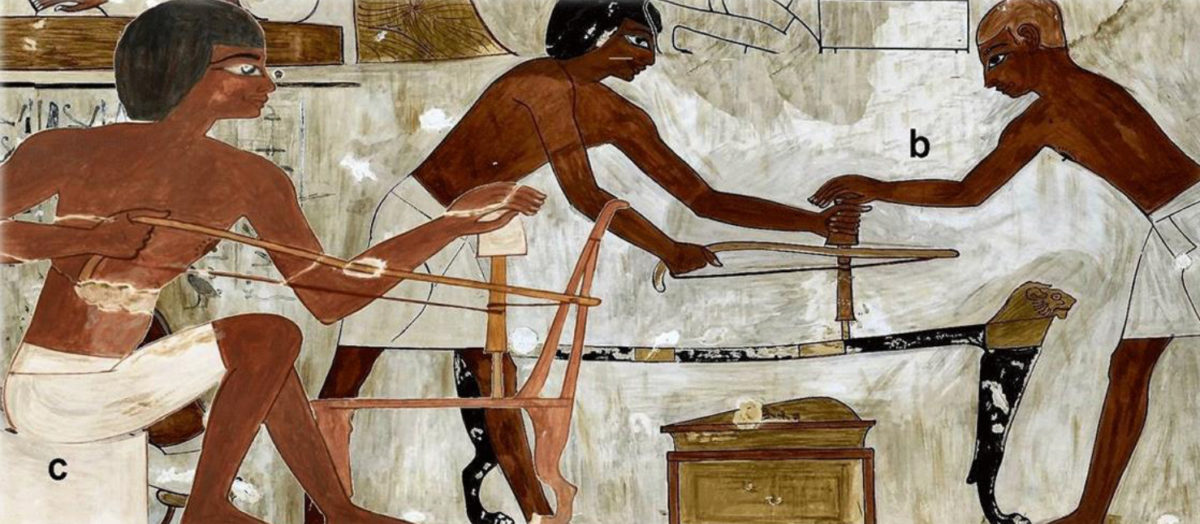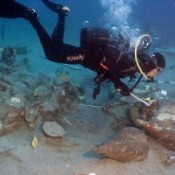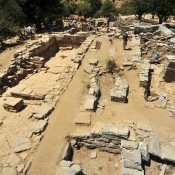The bow drill as well as the lathe can be regarded as the first step in the mechanization of woodworking. As for the former, there is a wide range of written, pictorial and archaeological evidence for its use in woodworking artifacts, in furniture making and shipbuilding, although in most cases only the bronze drill bit has survived and its shape is unclear due to extensive wear. Moreover, given the perishable nature of wood, the wooden components have not been preserved. Consequently, important questions about the function, evolution and the degree of specialisation of the bow drill remain as yet unanswered.
On Friday, 29 March, Elena Maragoudaki will give a lecture on these issues, entitled “The first mechanically driven woodworking tools (bow drill and lathe) in shipbuilding and furniture making respectively during the LBA period”. The event is part of the Aegean Lecture series, organized by Aegeus – Society for Aegean Prehistory and the Swedish Institute at Athens.
This lecture aims towards the quantitative, qualitative and ergonomic evaluation of the LBA woodworking bow drill. The target set was pursued through the recording, examination and classification of the available archaeological data, gathering the sources and reconstructing certain drill types. Drill evaluation was based on qualitative (hole side quality, boring accuracy, hole shape), quantitative (drill bit penetration speed) and ergonomic criteria (user fatigue). Through experimental procedures simulating its use in shipbuilding (peg locked tenons of the Uluburun shipwreck hull) and furniture making (table ΝΑΜ 890 from the Shaft grave V of the Circle A at Mycenae). The quality criteria for the drill bit geometry include the size and shape of the hole, the quality of the edge of the hole, and the roughness of the surface of the interior of the hole.
As for the lathe, the other innovative mechanically driven tool, little can be said for the time being. Due to the fact that the tabletop from Mycenae is a lathe-made one, an attempt is made to give a more specific insight to the construction of both artifact and tool itself.
The lecture will be in English.
It will be given on Friday 29 March 2019, at 19:00, in the Swedish Institute at Athens (Mitseon 9, Athens).





